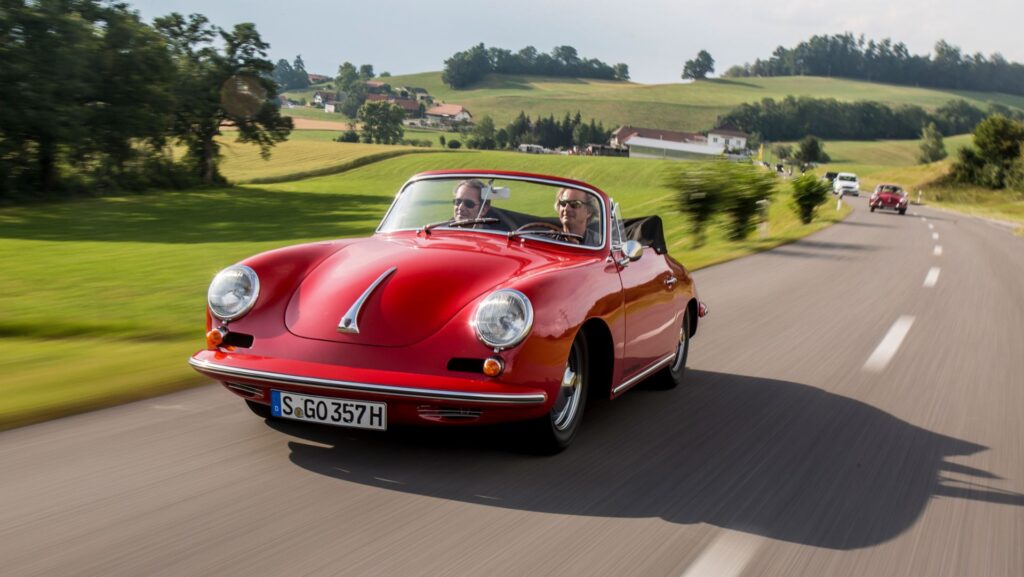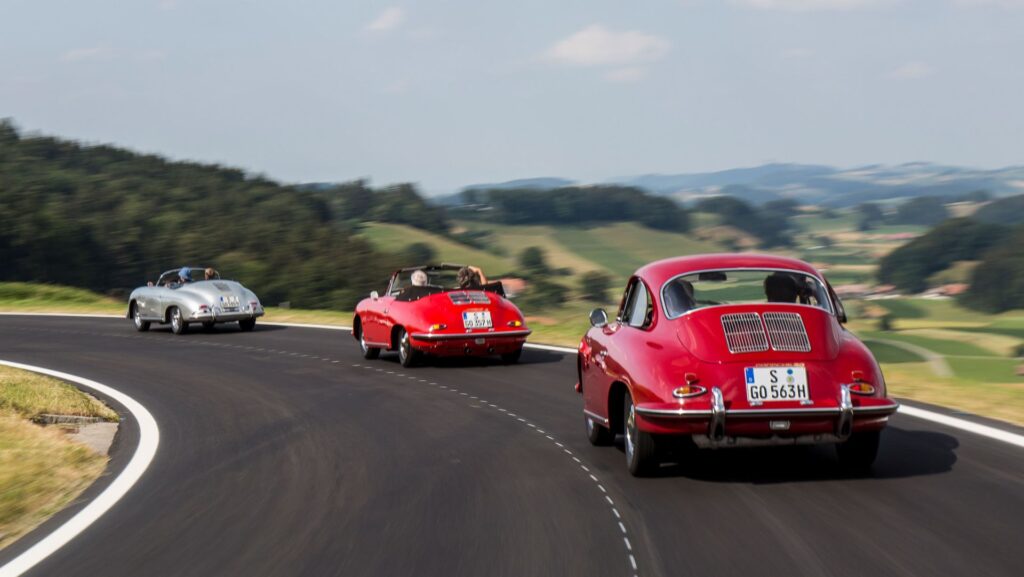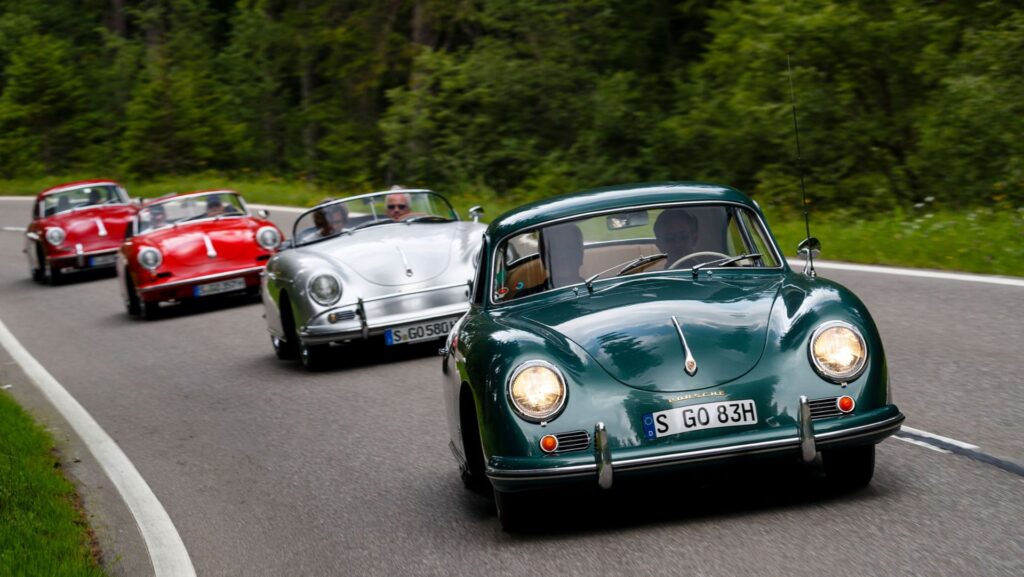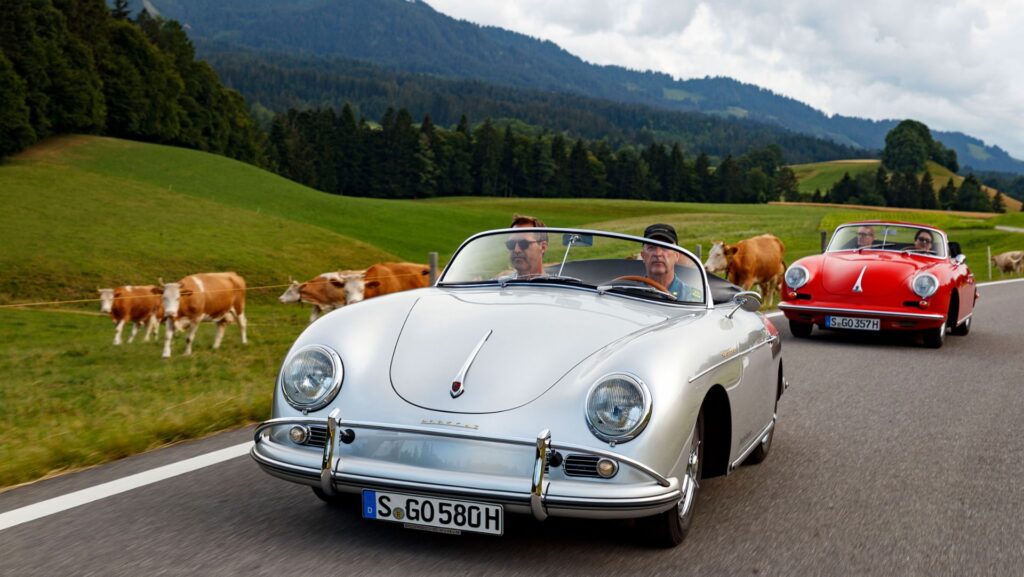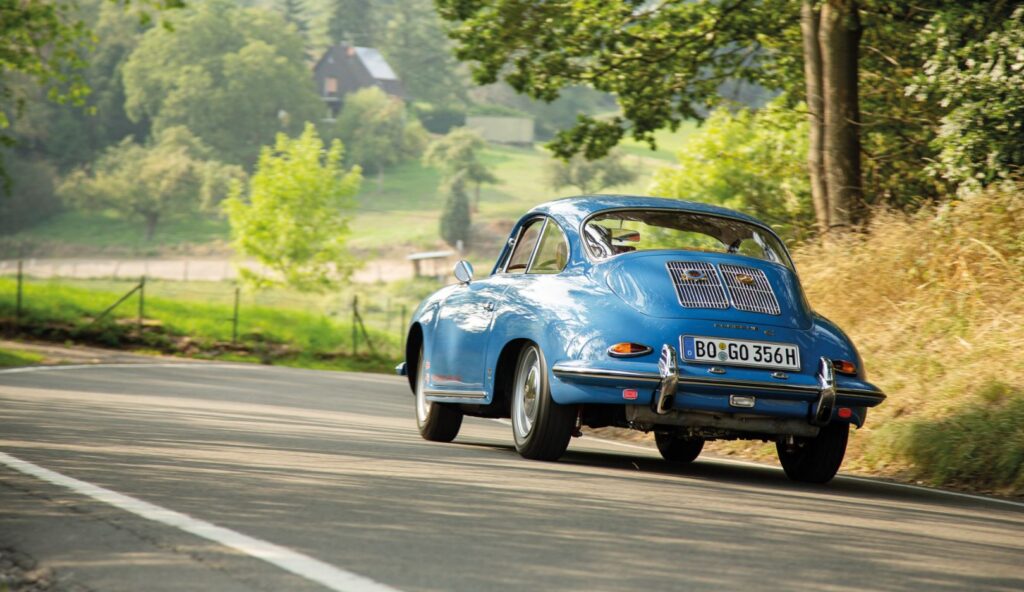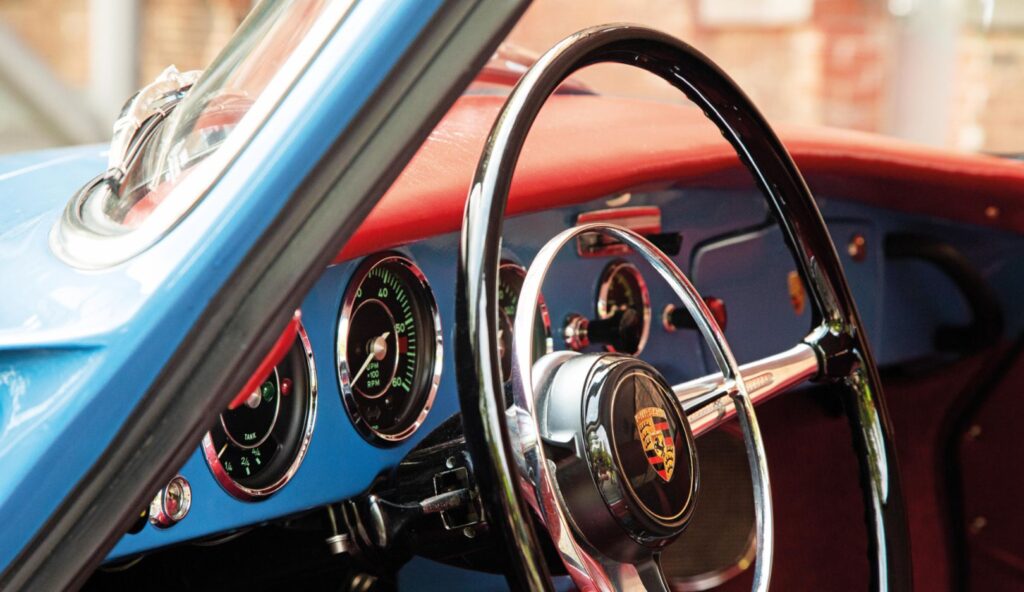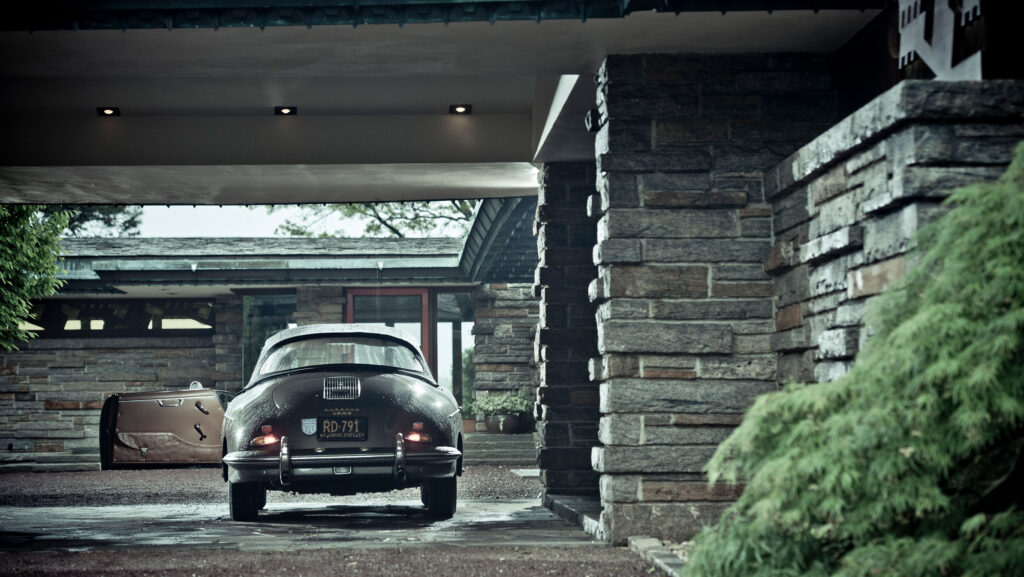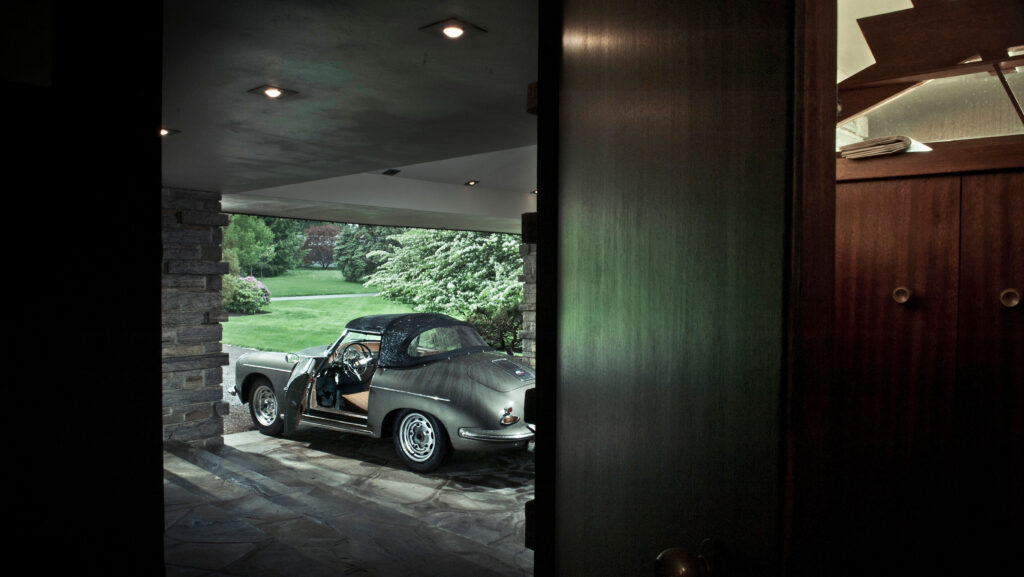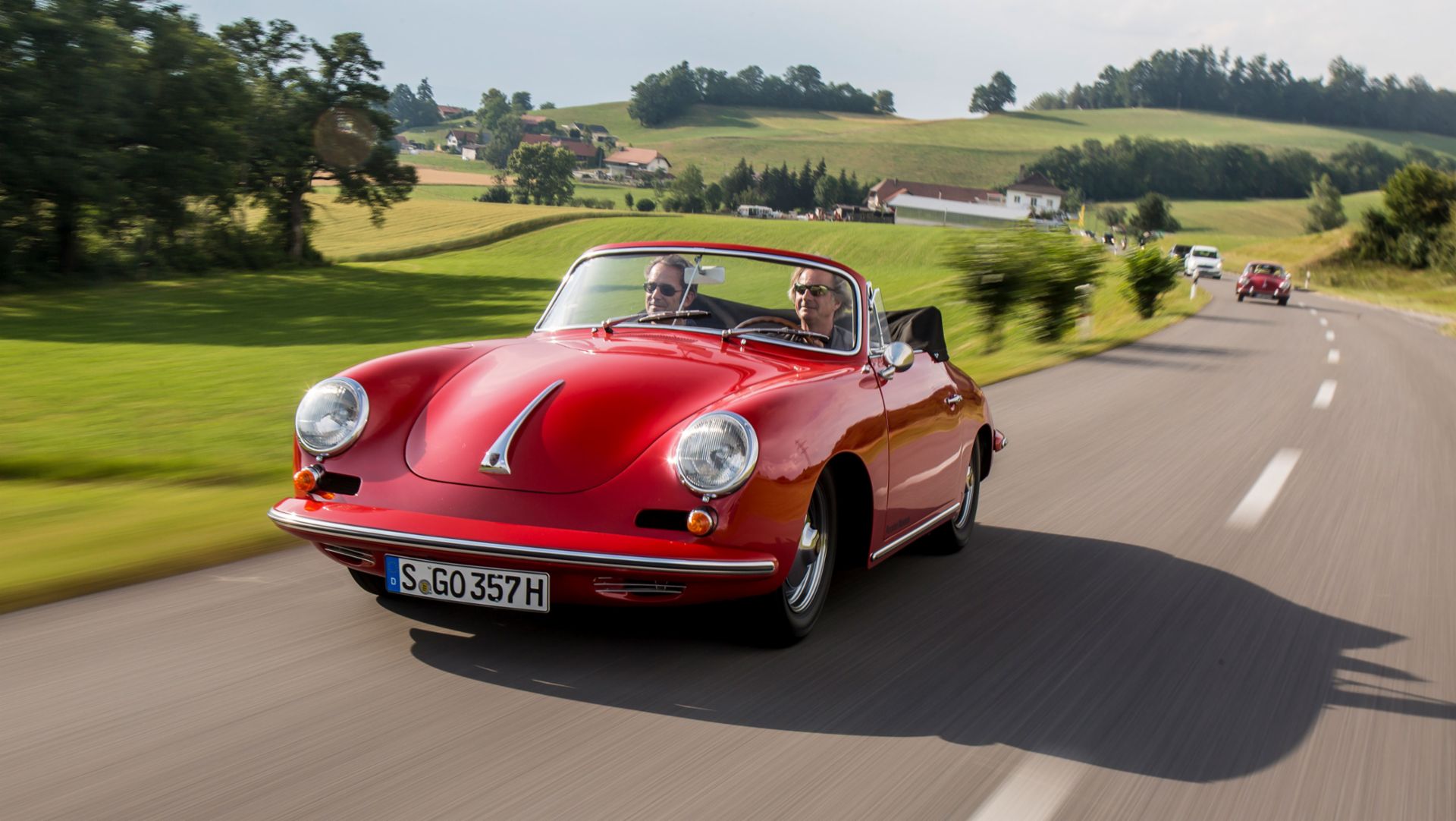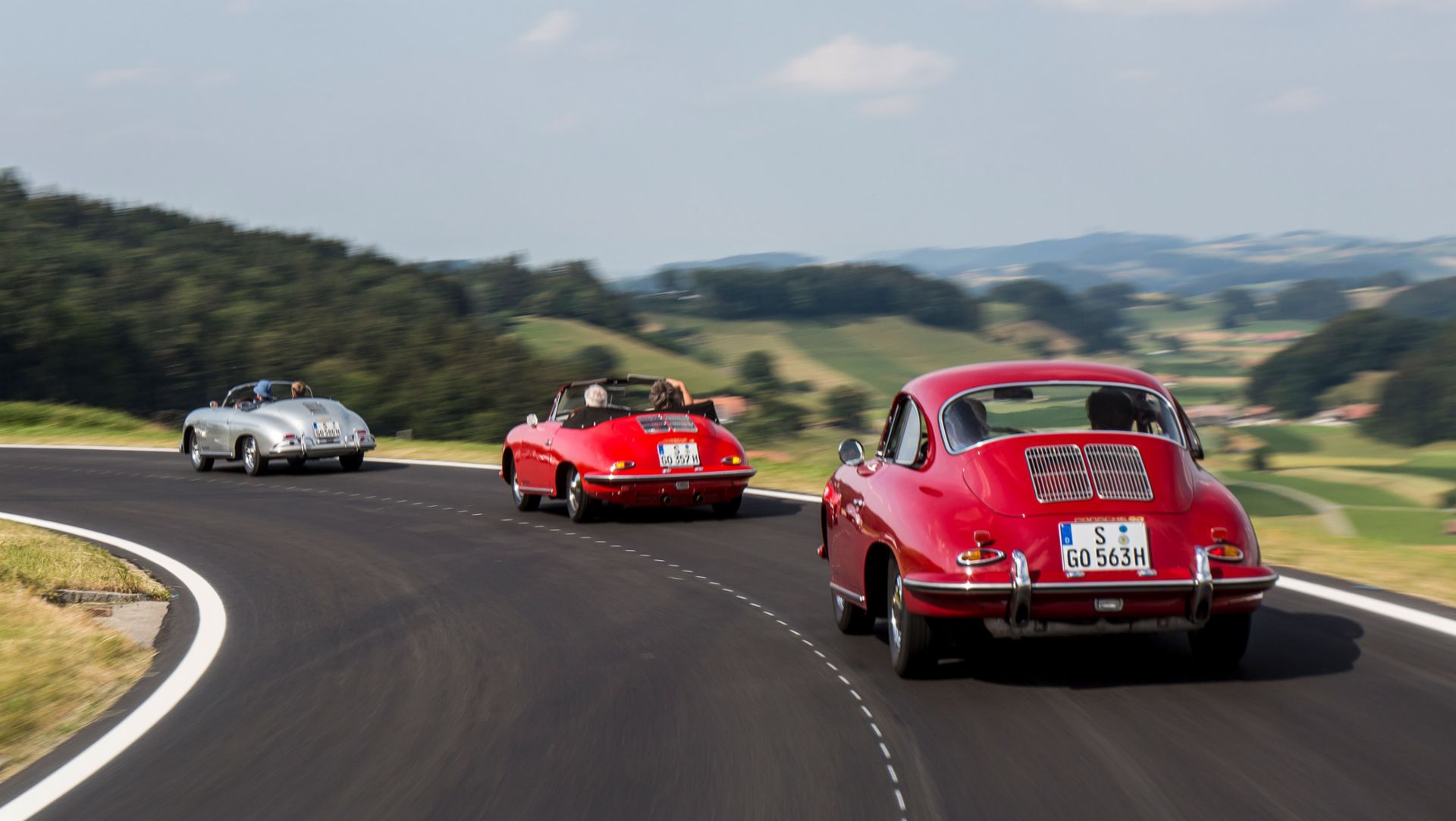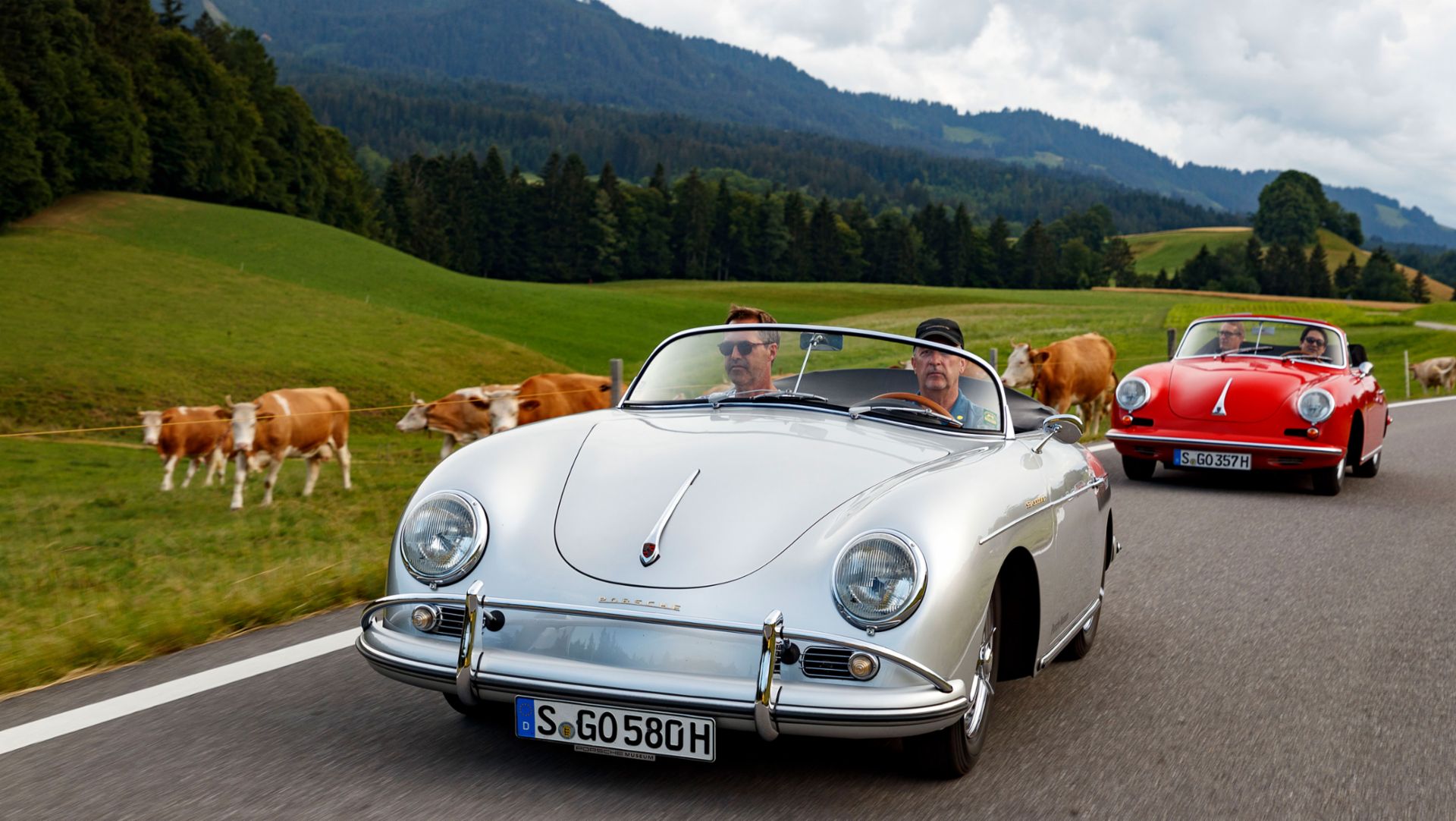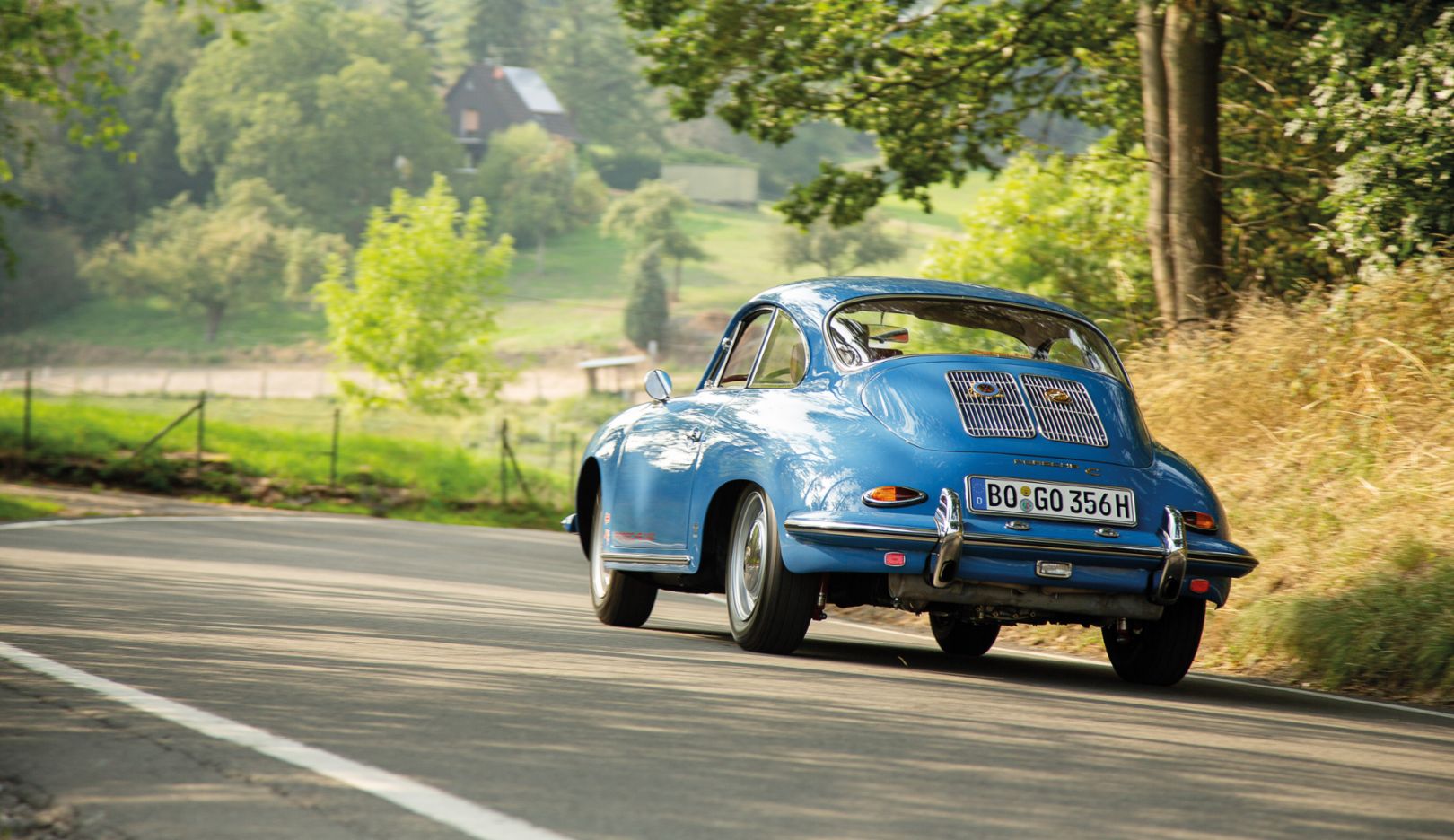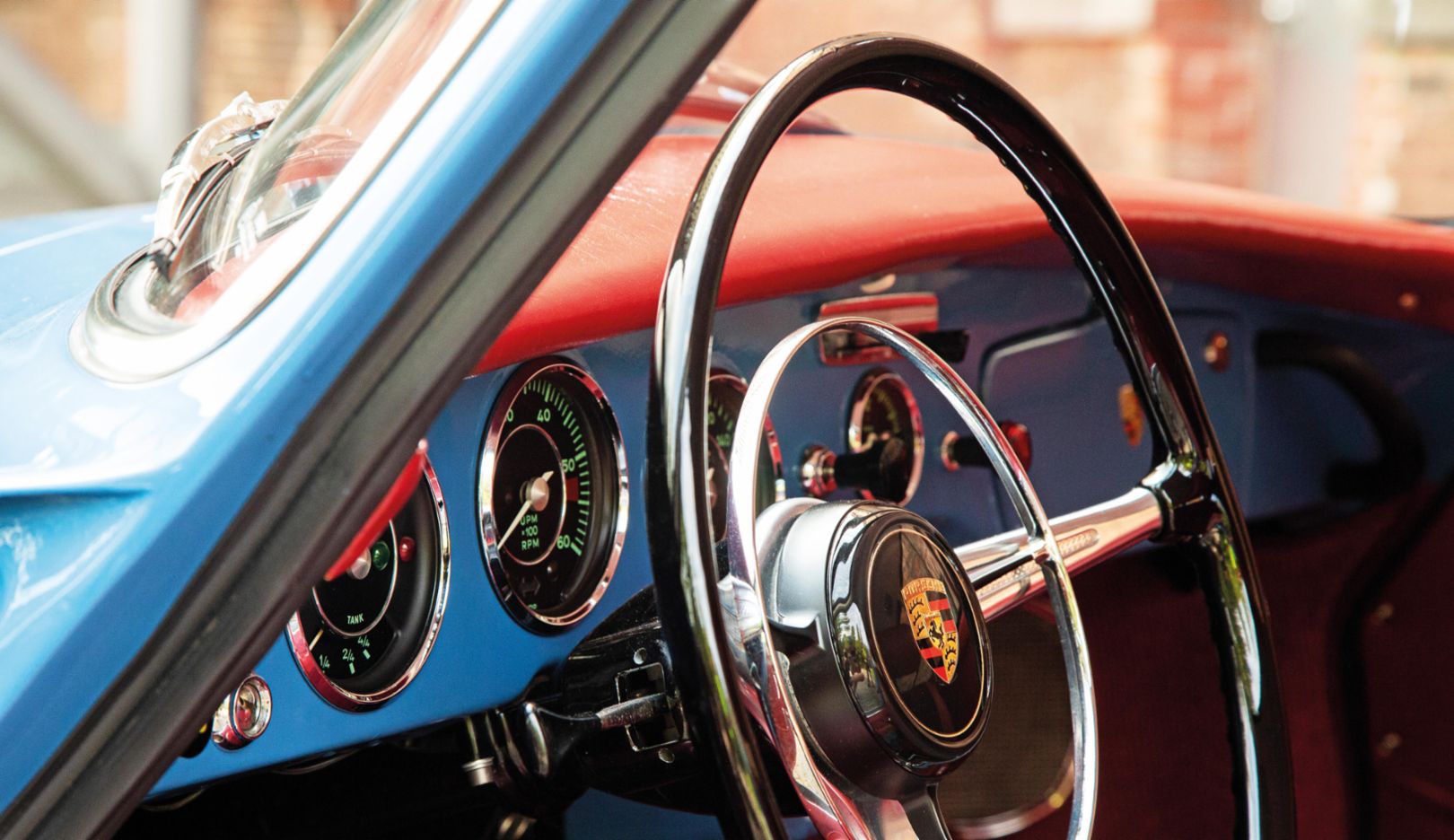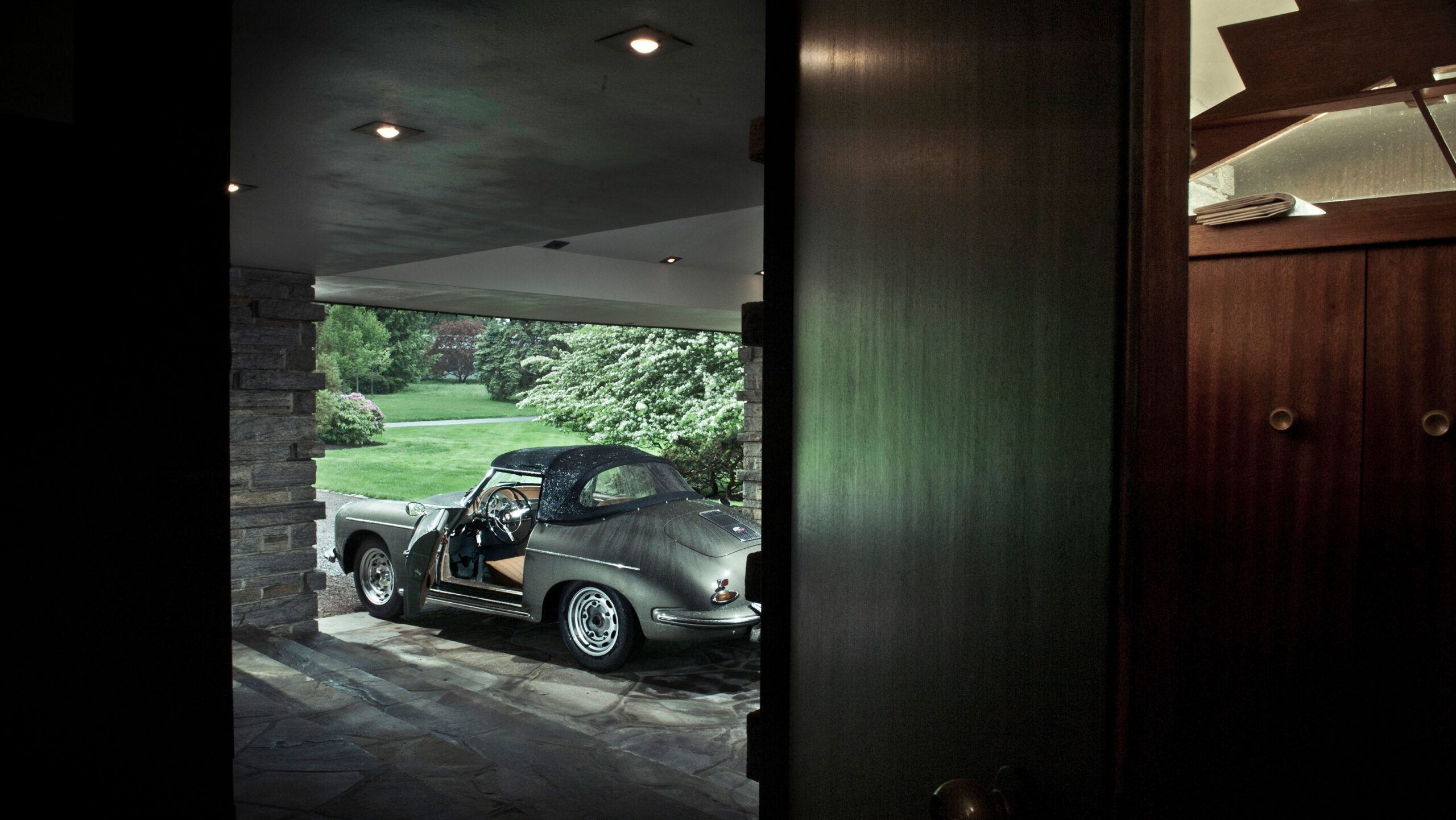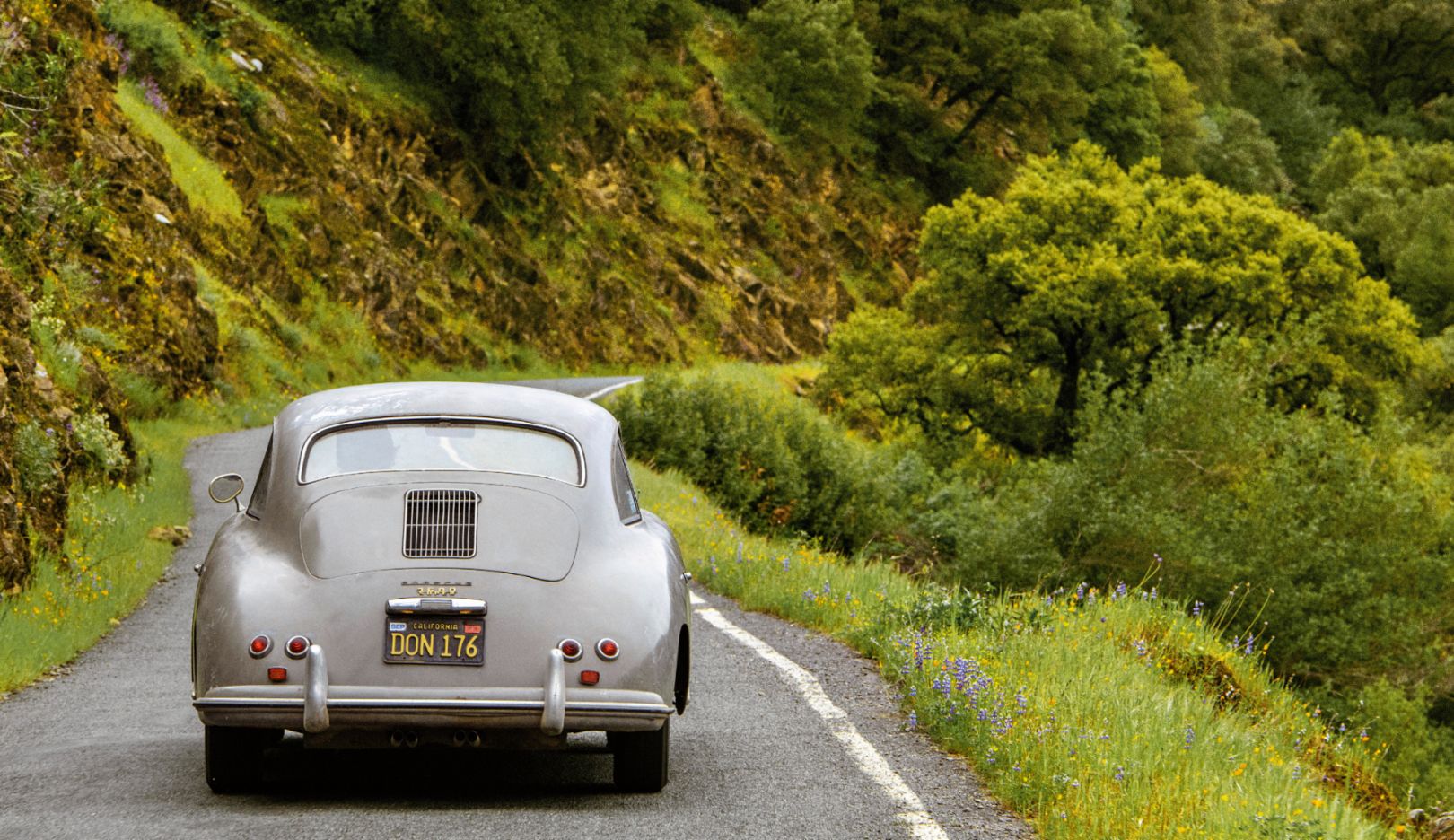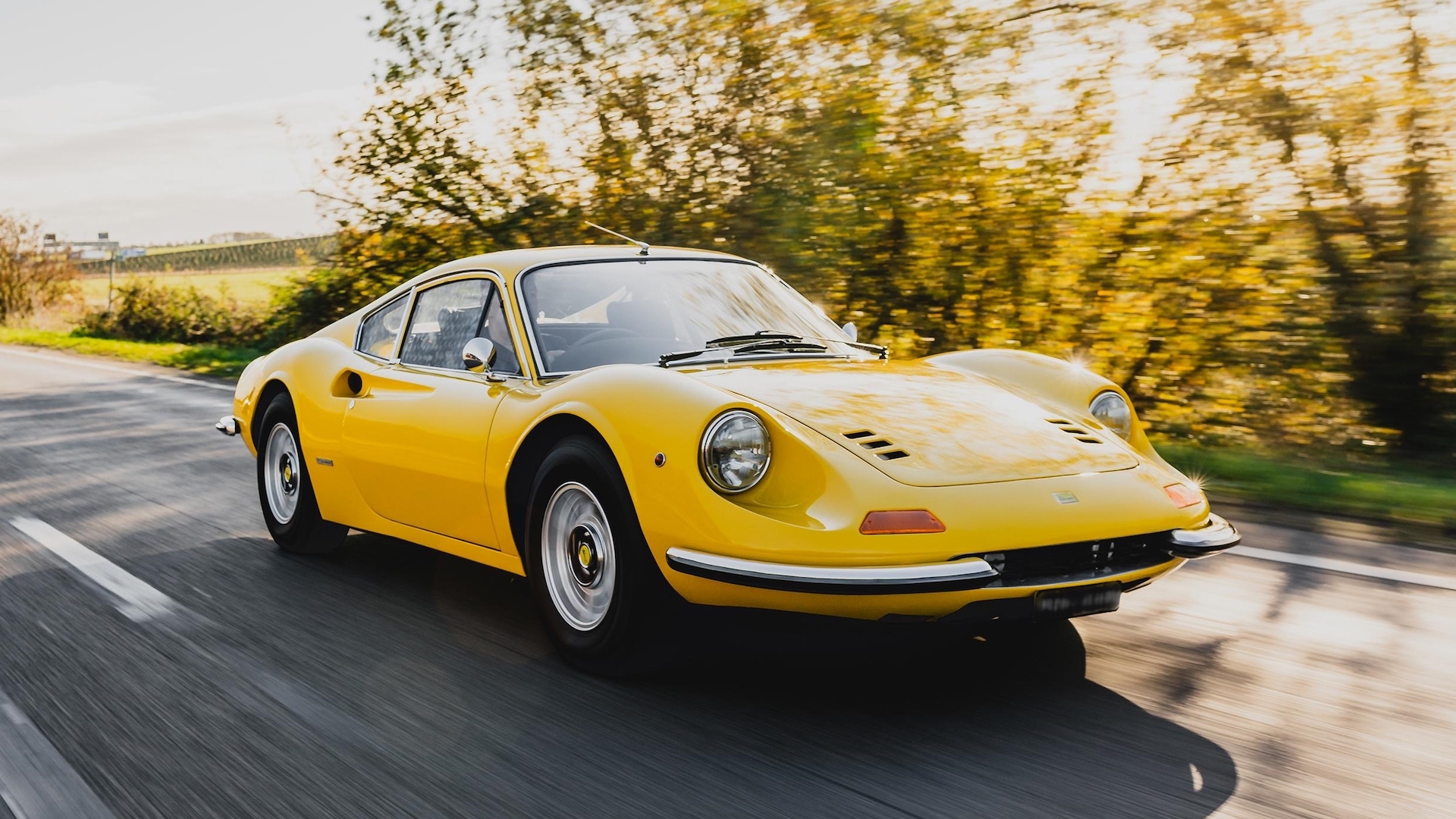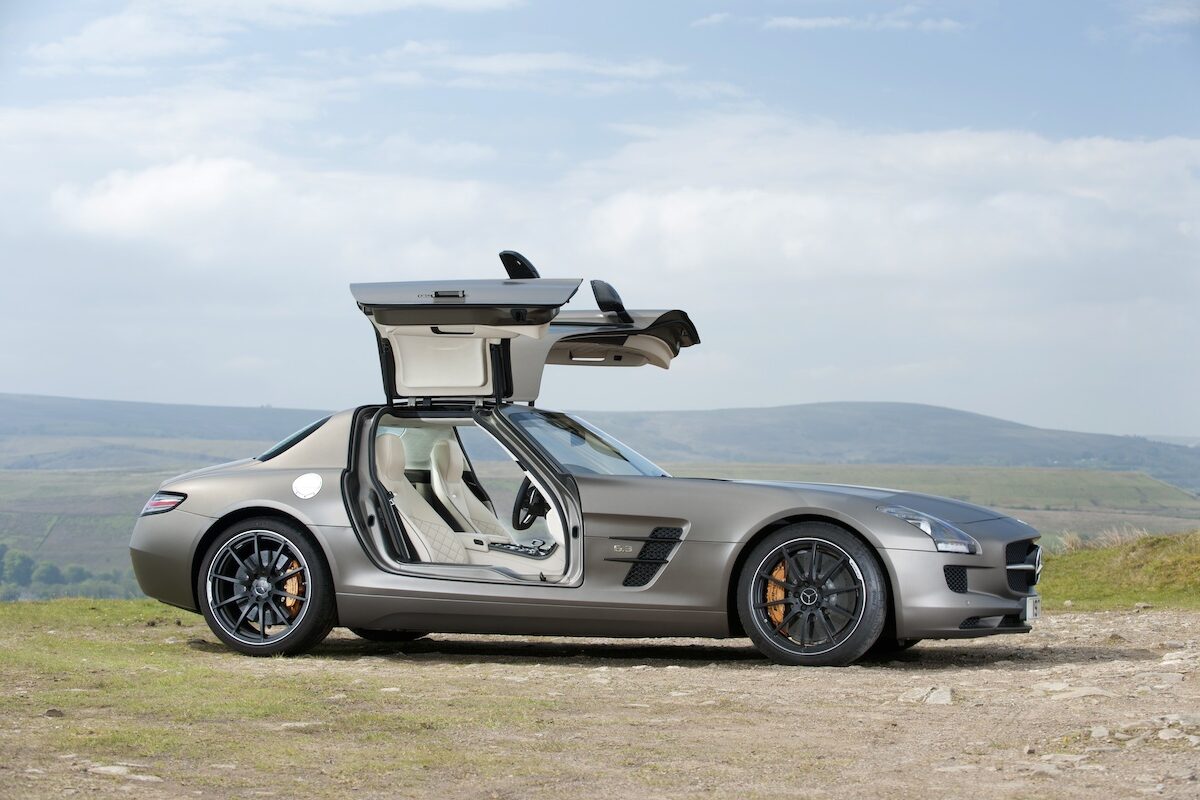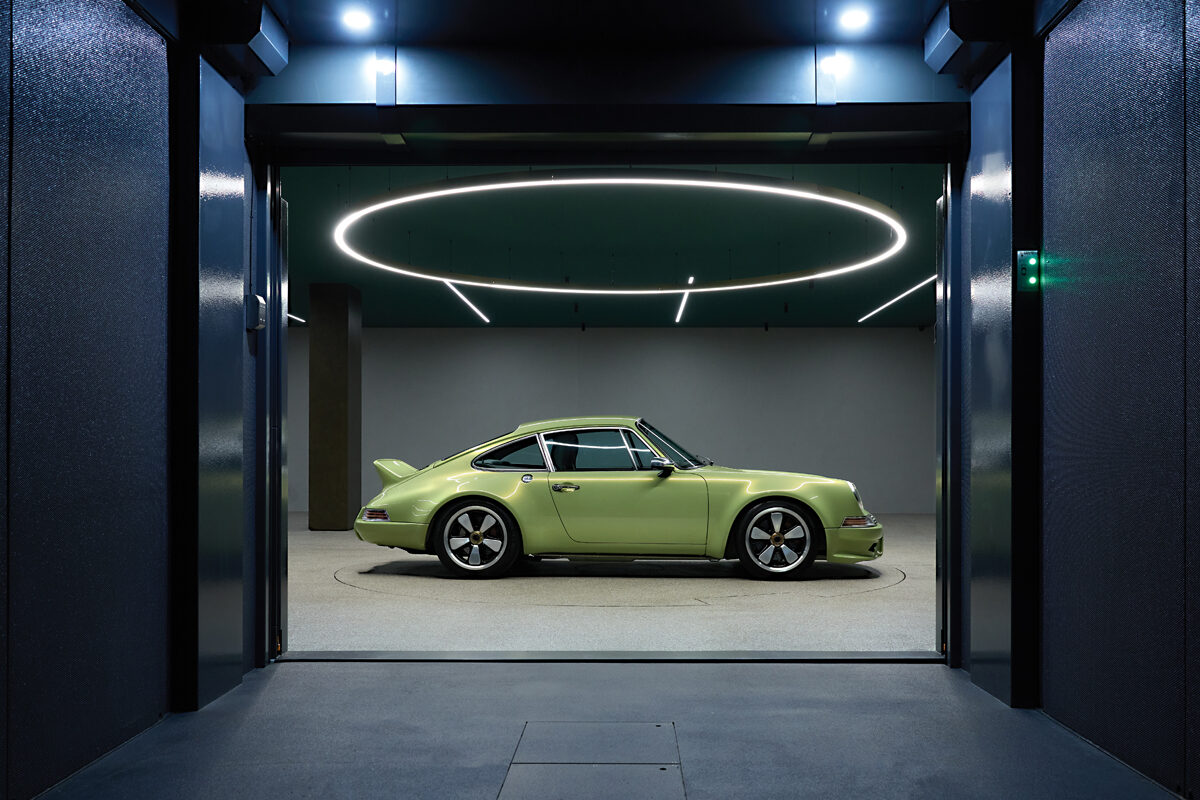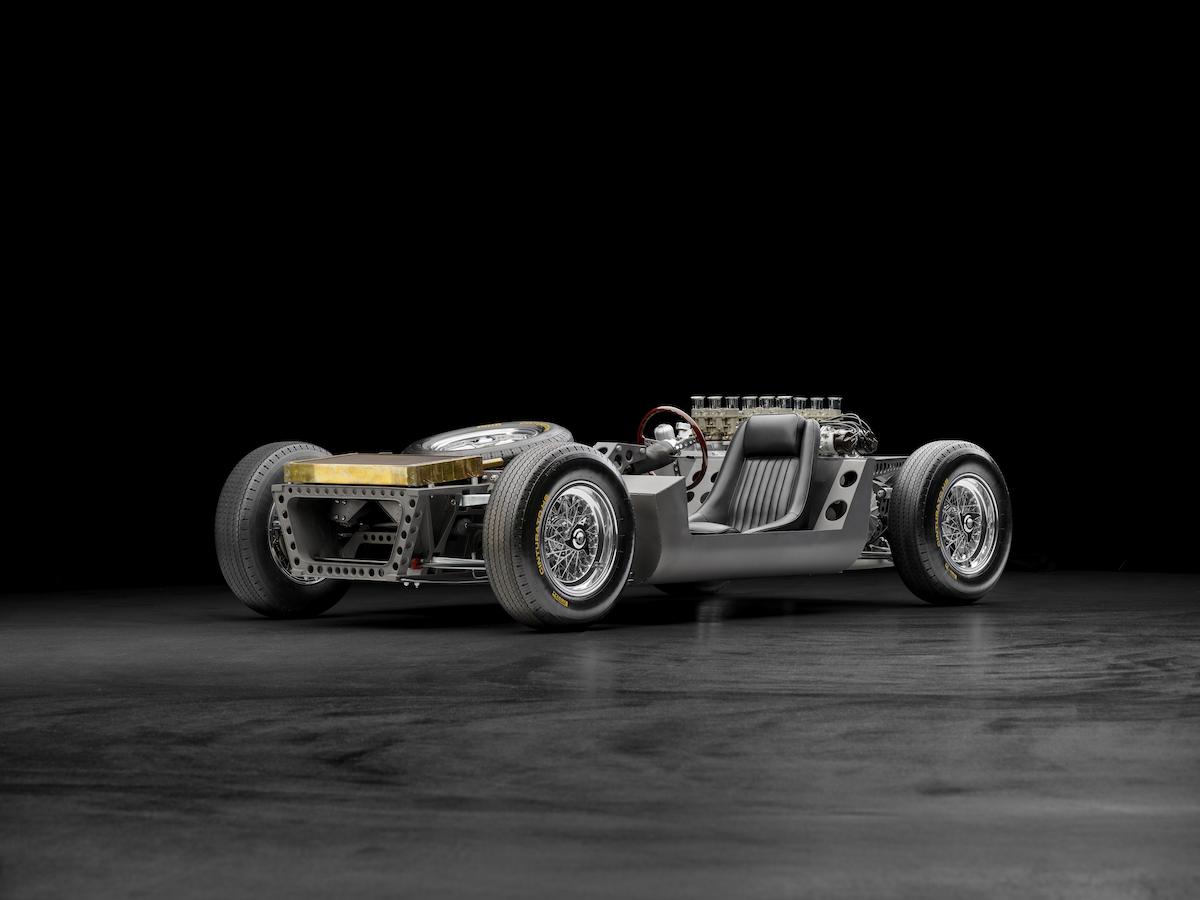Melbourne-based pump manufacturer Norman Hamilton was touring Europe in the summer of 1951 when his rental Oldsmobile 88 was rounded up on Austria’s Grossglockner Pass by a low-slung sports car that effortlessly slipped past him on the narrow mountain road.
Intrigued by how this silver streak could make such short work of the treacherous curves, Hamilton later caught up with the car and its driver at a village inn where they had both stopped for a break, and struck up conversation.
The hot shoe turned out to be German racing driver and Porsche tester Richard von Frankenberg, who showed the Melbourne businessman around the sleek machine, explaining he was conducting chassis shake-down testing for its manufacturer.
So intrigued was Hamilton by the lithe, little Porsche that he followed von Frankenberg all the way to the factory in Zuffenhausen, Germany, where he was introduced to one of its creators, Ferdinand “Ferry” Porsche.
Ferry had designed and engineered the Porsche 356 in collaboration with his father Ferdinand Porsche, creator of the Volkswagen Beetle. Significant contributions were also made by engineer Karl Rabe and designer Edwin Komeda.
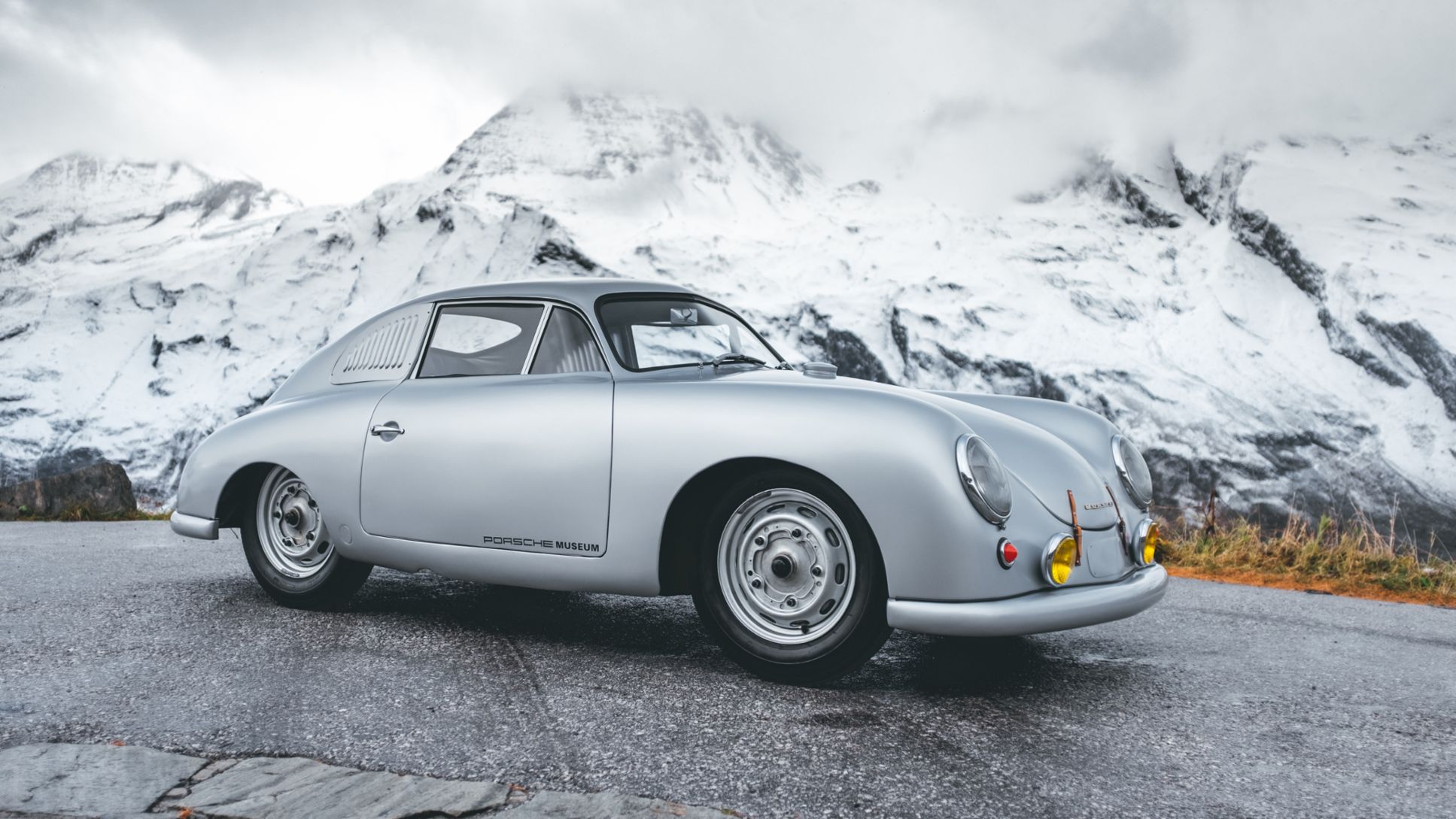
As Michael Browing explains in his excellent ‘Christophorus’ feature on the Hamilton family’s influence on establishing Porsche in Australia, Hamilton secured a hand-shake agreement with Ferry Porsche to become the brand’s Australian and New Zealand distributor. The deal meant Hamilton was only the second Porsche agent outside of Europe, following Max Hoffman in the USA, and Porsche’s first right-hand drive distributor.
In fact, as Browning explains, until that stage Porsche had built but a single right-hand drive car, that being for famed Austrian one-armed racing driver Otto Mathé. Hamilton’s handshake deal included a contribution to the tooling costs of the conversion.
A few months later, Hamilton arrived back at the factory with a friend in tow and collected a split screen 356 cabriolet and a coupe, which they drove back over the Swiss and Italian Alps to Genoa, from where they were shipped to Melbourne.
The pair of Porsches were subsequently shown to prospective buyers at an event in Melbourne, where attendees would have heard how the floor pan of the Porsche 356 emulated the underpinnings of Porsche Senior’s Volkswagen, as did the rear-mounted 1286cc air-cooled engine. Unlike early prototypes, production versions of the 356 followed Volkswagen practice by mounting the engine behind the line of the rear axle.
Australian import restrictions restricted Hamilton’s efforts to grow the brand Down Under, with single cars arriving in both 1951 and 1952, followed by five in ’54, and 15 in ’55.
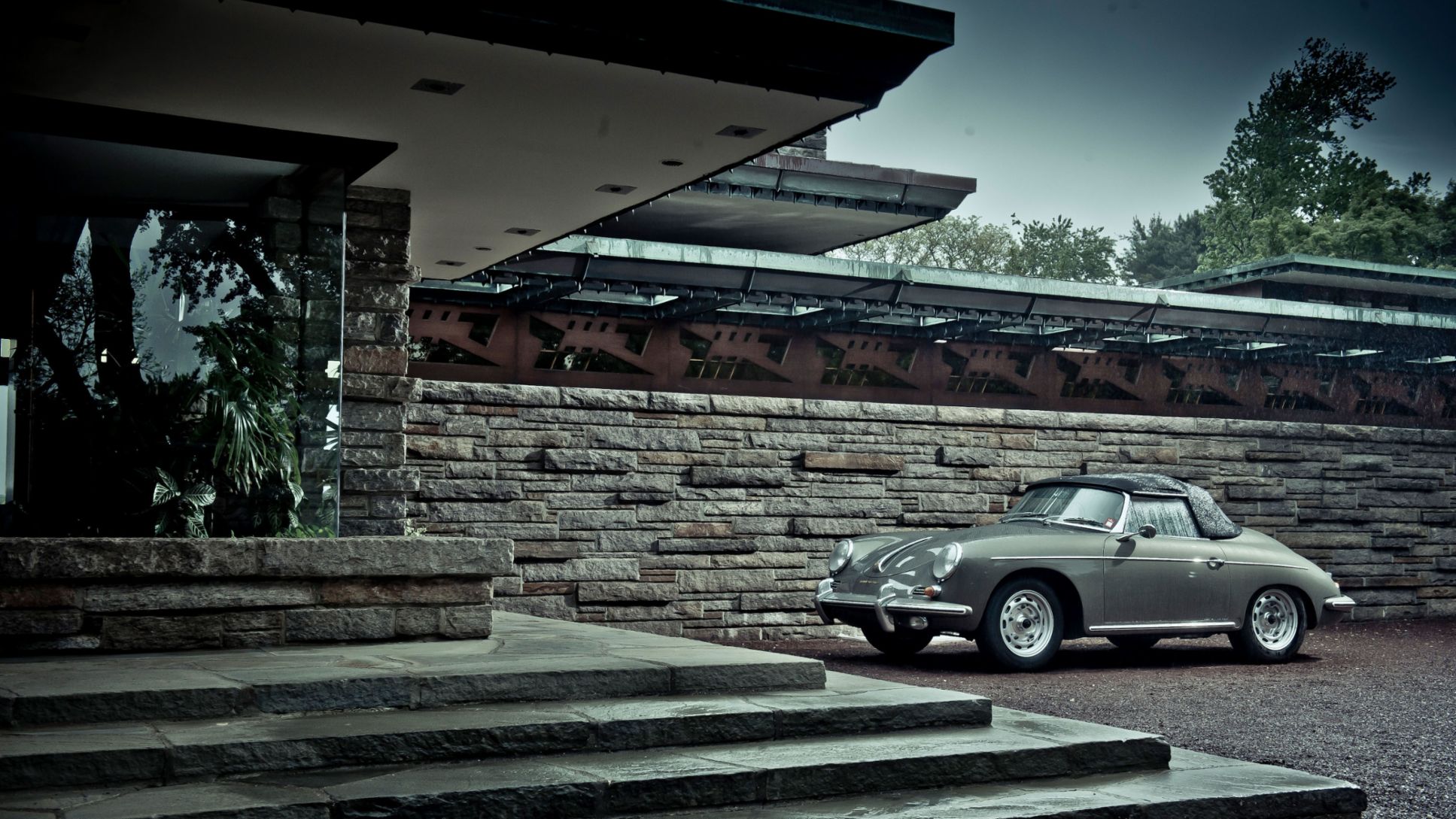
By 1959 the tally had grown to 84, helped in no small measure by Hamilton and Ken Harper steering a 356 to the finish line of the grueling 10,400km REDeX Reliability trial in 1953.
The early days of twin carburetors and some tuning boosted power from the very first imported cars to 29kW, but by 1954 the 356 was being sold here with a 1.5-litre engine that mustered a more strident 48kW.
Tested in the USA by Road & Track, a 356 Coupe with the larger capacity engine, a 4.43:1 final drive and weighing just 841kg, accelerated from 0-60mph (0-97km/h) in 13.6 seconds, on its way to a top speed of 167km/h.
The magazine’s writers perhaps erroneously assessed the car’s weight distribution at 45.5 percent front/54.5 rear and commented that the Porsche “displayed none of the ‘dangerous’ handling characteristics so often attributed to rear-engined cars”.
Porsche in late 1955 announced a 356A version, with Coupe, Cabriolet, Speedster and high-performance Carrera versions. In Australia, the coupe was priced at £2305, making it just £57 cheaper than an XK140 Jaguar.
Step out of the XK into a 356 and the differences were stark. The German car’s painted dash housed a simple cluster of three gauges against the Jag’s elaborate array of dials and switches.
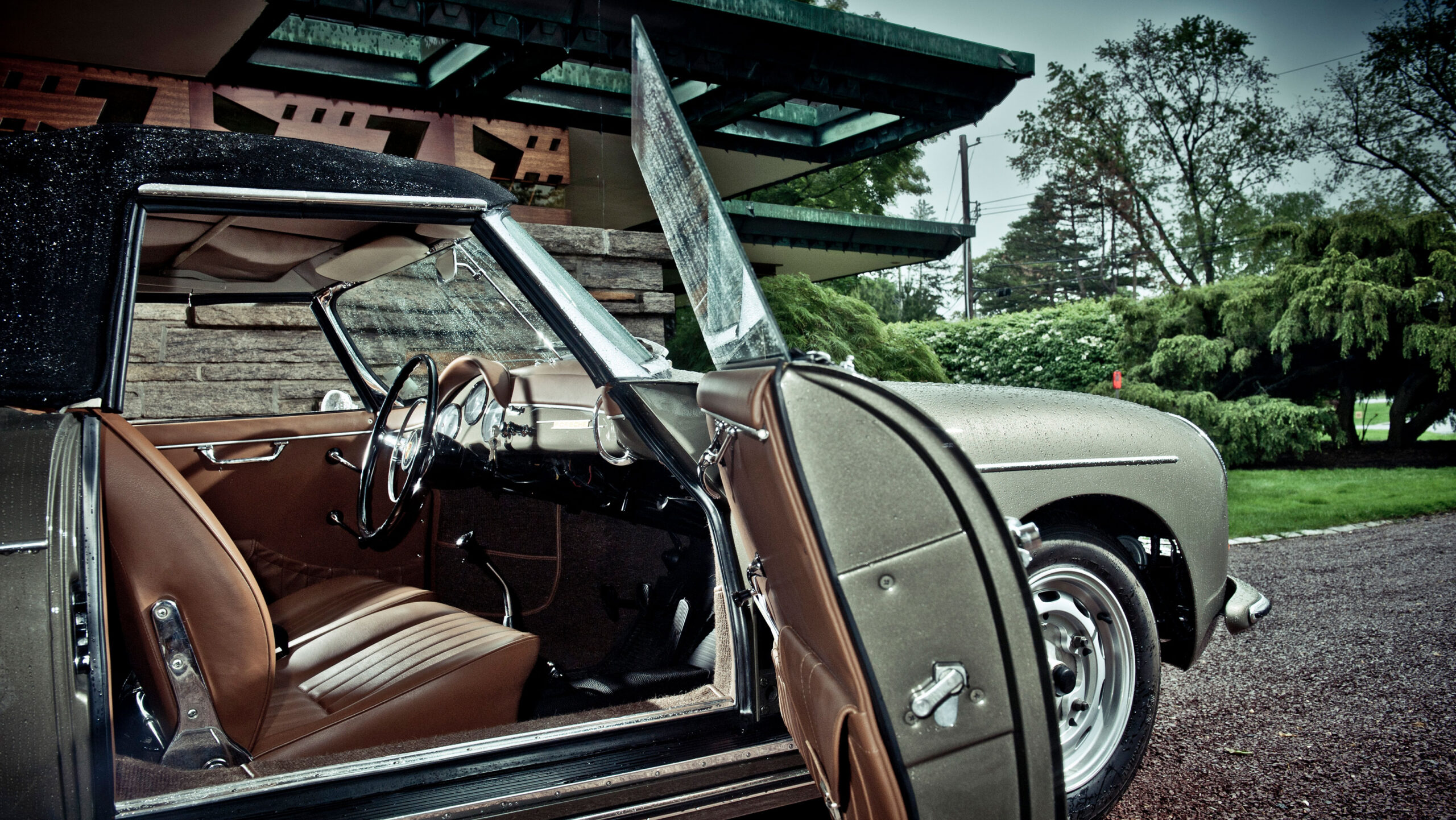
Occupants of the Porsche were offered skimpy vinyl seats against the XK’s more sumptuous leather and, while the Porsche was much lighter and rear-engined, its steering wheel was about the same diameter as the one in the heavyweight Jag.
Porsche pedals were for decades floor hinged as in a Volkswagen Beetle and the 356’s cabin looked cramped, but could accommodate drivers short or tall.
The suspension followed Porsche Senior’s formula, with torsion bars front and rear and drum brakes. The Porsche rim was Volkswagen derived too, with five mounting lugs and relatively narrow 5.60×15 tyres.
Speedster versions when new were less expensive than coupes or the cabriolet with its more elaborate folding roof. For reasons of scarcity, Speedsters have become hugely expensive in today’s market, with recent sales including US$935,000 for one of the rare quad-cam Carrera Speedsters. Even single-cam Speedsters can reach US$500,000, with local examples trading at $700-800,000.
Equally scarce and valuable are early versions of the Carrera coupe, with quad camshafts, compression ratios that reached 9.8:1 and optional Weber carburettors. In standard Solex-carb form, the 356A Carrera would produce 82kW at 6400rpm, however with further development that could be extended to 119kW.
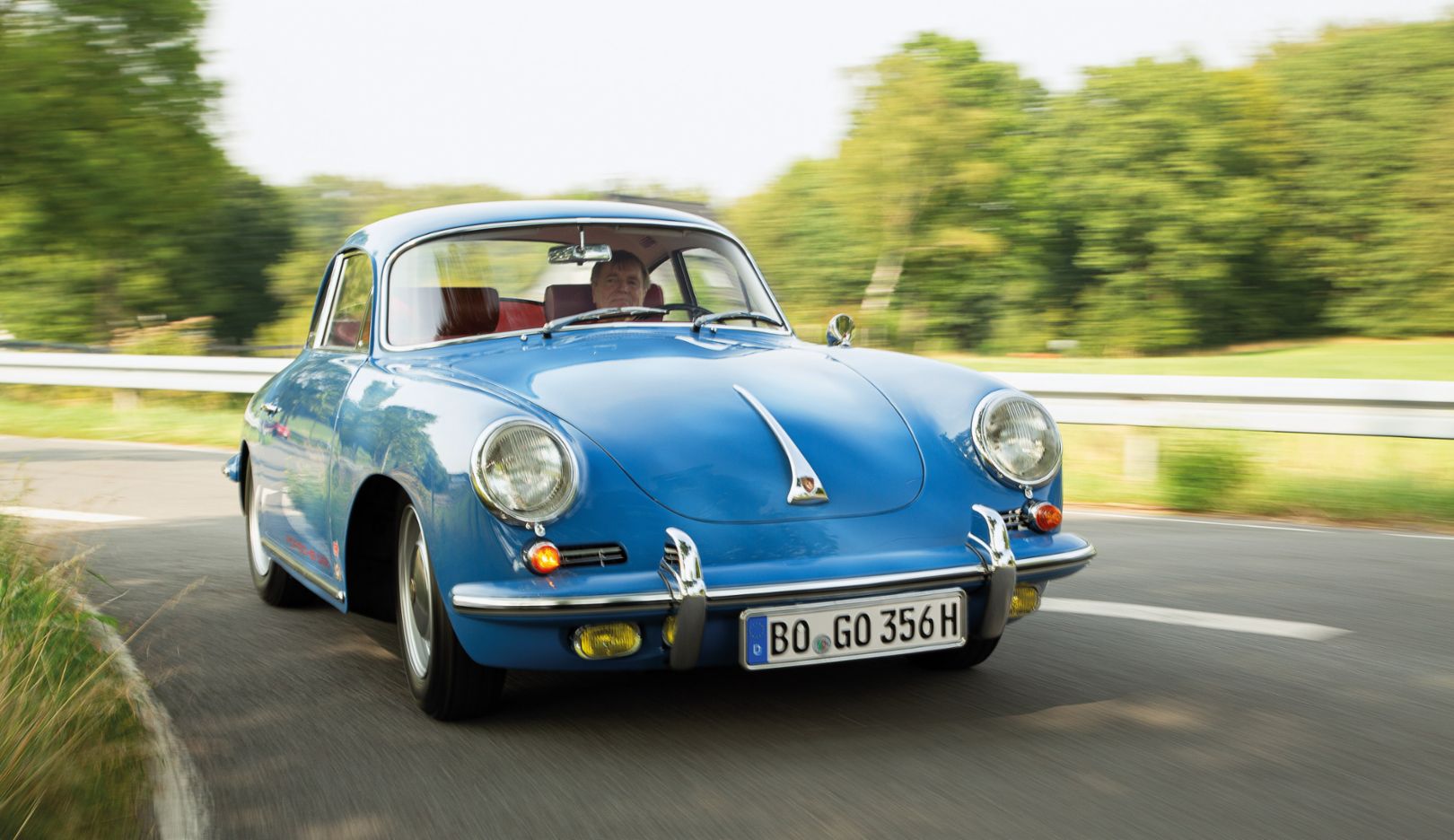
The types most often found in the Australian market are the 356C, 356SC, and the earlier 356B. These were powered by 1582cc engines with twin carburetors and a single camshaft. Power by 1964 when Sports Car World magazine tested a local 356C had reached 56kW with a top speed of 177km/h.
The 0-60mph time of 13.8 seconds was a fraction slower than achieved by the earlier US-spec car, but fuel consumption for anyone who cared in those $0.08 cents per-litre days was 9.2L/100km.
More than 76,000 Porsche 356s were made, with approximately half that number sold to the USA. Porsche 356B and C Coupes in that market can be found complete but needing restoration at US$50,000 before rising to US$250,000 when fully restored.
Low-priced and neglected 356s are no longer common in Australia, unlike 30 years ago when we seemed to be the preferred destination for any early Porsche liberated from a North American wrecking yard. Today, values range from around $150,000 for coupes in average condition to $300,000 for a genuine RHD Cabriolet.
As investments, there is little in the market to match the growth and future possibilities offered by a pre-1970s Porsche.
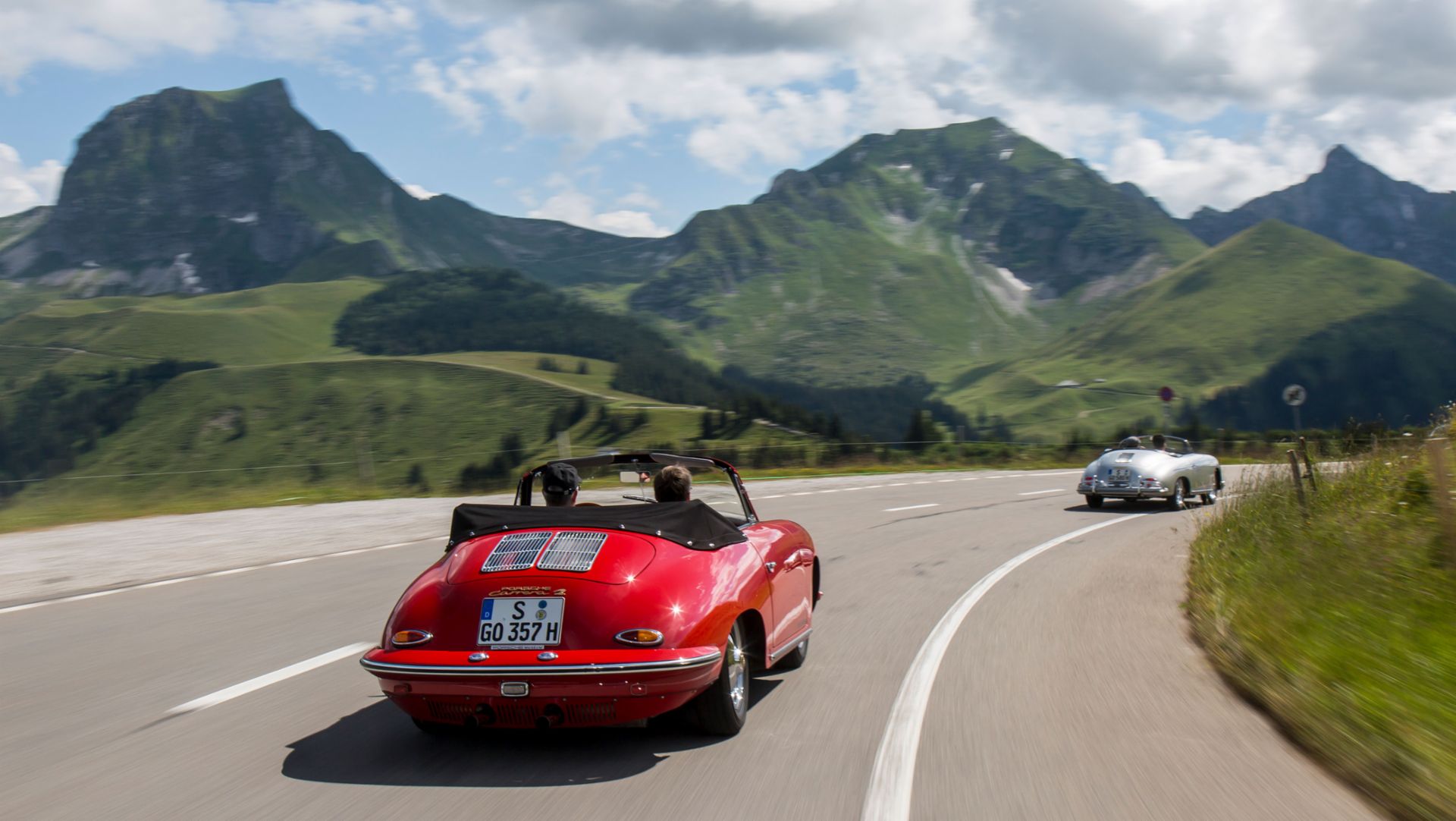
Things To Watch Out For When Buying a Used Porsche 356 (1954-65)
- Ensure that major components are correct for the year of manufacture and pay less for a car with compromised authenticity.
- Rust is rarely a problem with restored 356s but have the body checked by a specialist for older, sub-standard repairs.
- Cars that retain six-volt electrical system can experience problems with earthing and starting.
- Any smell of fuel is a danger signal as delivery pipes and the front-mounted tank can develop leaks.
- Vibration or clutch shudder can be due to weakened or cracked engine mounts.
Valuation Timeline: Porsche 356 (1954-65)
-
1985$20,500
-
1995$40,000+95.12%
-
2005$57,000+42.5%
-
2010$70,000+22.81%
-
2015$110,000+57.14%
-
2020$175,000+59.09%
-
2025$230,000+31.43%356B/356C Coupe

